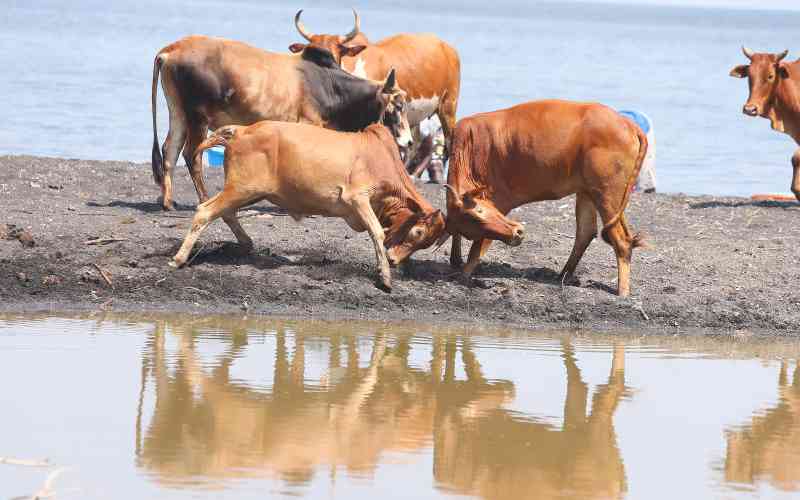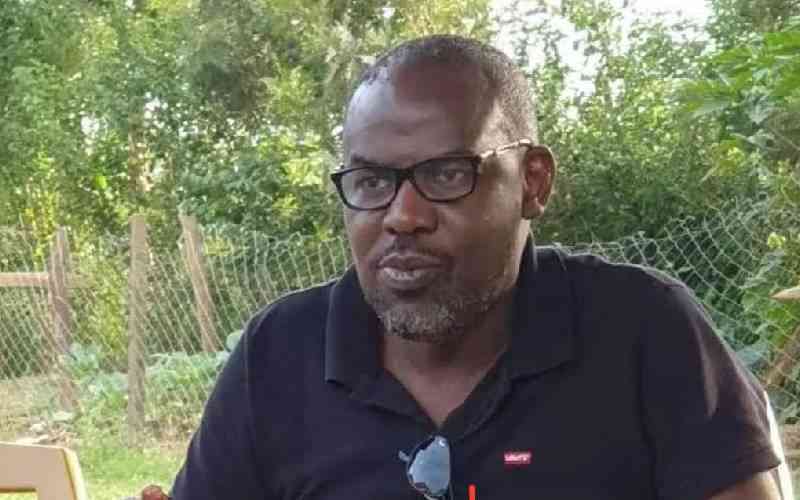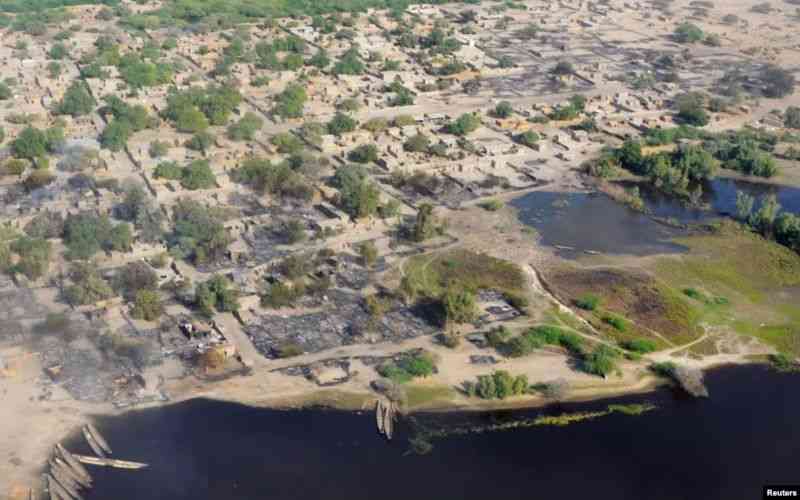By Dedan Okanga
Increase in construction activities in the North Rift has led to emergence of quarries that have been a death trap for many.
Some of them have been open for years and attract school children who swim in the waters, oblivious of the death that lurks around them.
 |
Divers Simon Kinuthia (left) and Mr Stanley Ng’ang’a at an abandoned quarry near Iten. They have retrieved more than 20 bodies from unprotected quarries in Rift Valley. Photo: Peter Ochieng’/ Standard |
Situated on footpaths and roadsides, the quarries have also killed drunkards and jilted lovers who have jumped into them in suicide missions.
Memories are fresh of a recent incident near Burnt Forest in which three primary school children and an elderly man drowned in a quarry abandoned by a construction company.
"The children left home to swim at the quarry, but drowned," said Mr Joel Samoei, the local chief.
A tractor driver responded to their cries of distress and jumped into the quarry to rescue them, but he too drowned.
In recent times, the North Rift has experienced a surge in road and real estate construction, as the region attempts to redeem infrastructure ravaged by last year’s post-election violence.
"The problem is that after they dig up an area, they move to the next spot leaving the quarry to fill up with water," said the chief of road construction companies.
Some quarries are so old that residents cannot remember when they were dug, but know they are hundreds of metres deep.
Decomposing bodies have been discovered in the water days after they go missing. But some are never been found.
"Families approach us when they suspect their loved ones might have drowned but in some cases we never find them," said Mr Stanley Ng’ang’a, a local diver.
Dumped in the quarries
According to the divers, there are times when they are hired to retrieve a body only to find a ‘wrong’ one.
Stay informed. Subscribe to our newsletter
"We do not return the wrong ones to the water because police are always at the site and take them away for possible identification," said Ng’ang’a.
A few days to Christmas, three bodies were retrieved from quarries and residents believe some decomposing ones could provide clues to unresolved murder cases.
"Some families still believe their loved ones are in police custody after post-election violence. But they might have been dumped in these quarries," said a resident.
The region, however, does not have enough trained divers. Recently, a Form Four student and a primary school girl drowned in two different quarries, but it took more than three days to be traced and retrieved.
Divers recall incidences where herdsboys have perished in their attempts to rescue drowning livestock.
Rapid response unit
Ng’ang’a has teamed up with 15 other young men to form a rapid response unit, which has saved many children moments after they fall into the quarries. Unfortunately, lack of facilities and the vastness of the region have meant that the victims are reached after they die.
"We only have one oxygen cylinder, and refilling it is expensive. This hinders our efficiency especially when we have to respond to distress calls," he said.
According to police records, 20 people have drowned in the last four months, but residents and divers insist the real toll is more than 30.
Eldoret Mayor Sammy Ruto said the council would crack down on construction activities that are hazardous.
As graders and bulldozers rumble around breaking and moving earth to improve Eldoret’s skyline and road networks, graves of drowning victims continue to increase, thanks to the abandoned sites.
 The Standard Group Plc is a
multi-media organization with investments in media platforms spanning newspaper
print operations, television, radio broadcasting, digital and online services. The
Standard Group is recognized as a leading multi-media house in Kenya with a key
influence in matters of national and international interest.
The Standard Group Plc is a
multi-media organization with investments in media platforms spanning newspaper
print operations, television, radio broadcasting, digital and online services. The
Standard Group is recognized as a leading multi-media house in Kenya with a key
influence in matters of national and international interest.
 The Standard Group Plc is a
multi-media organization with investments in media platforms spanning newspaper
print operations, television, radio broadcasting, digital and online services. The
Standard Group is recognized as a leading multi-media house in Kenya with a key
influence in matters of national and international interest.
The Standard Group Plc is a
multi-media organization with investments in media platforms spanning newspaper
print operations, television, radio broadcasting, digital and online services. The
Standard Group is recognized as a leading multi-media house in Kenya with a key
influence in matters of national and international interest.









